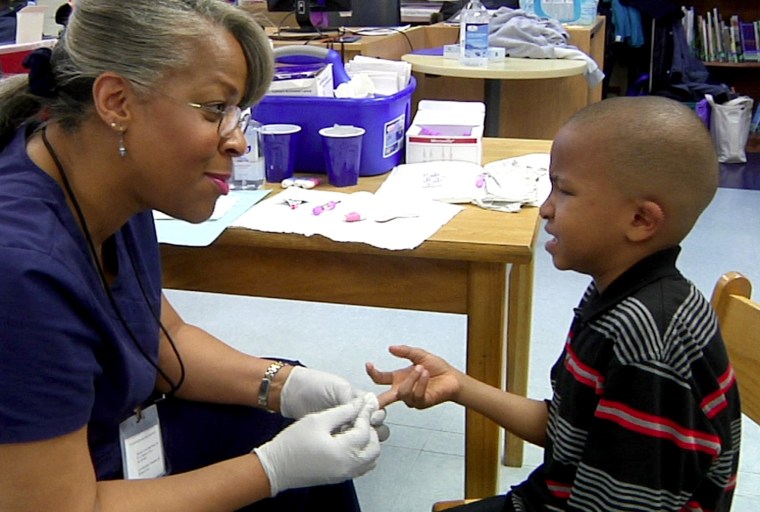Lead standards are not protecting children and doctors need to do more to help prevent kids from getting contaminated in the first place, the top pediatricians' group said Monday.
And governments need to do more to remove lead from paint and water supplies, the American Academy of Pediatrics (AAP) added.

“We now know that there is no safe level of blood lead concentration for children, and the best ‘treatment’ for lead poisoning is to prevent any exposure before it happens,” said Dr. Jennifer Lowry, chief of the Section of Clinical Toxicology at Children's Mercy Hospital, who led the team writing the new AAP policy statement.
“Most existing lead standards fail to protect children. They provide only an illusion of safety,” Lowry added.
“Instead we need to expand the funding and technical guidance for local and state governments to remove lead hazards from children's homes, and we need federal standards that will truly protect children."
“Most existing lead standards fail to protect children. They provide only an illusion of safety."
Just last week, a team at Quest Diagnostics, which does a large proportion of lead testing in the U.S., said more than 3 percent of 5 million kids tested across the country had blood lead levels of more than five micrograms per deciliter of blood, the level pegged by the Centers for Disease Control and Prevention as elevated.
RELATED: No Pill for Treating Lead Toxicity
And the team found 14 percent of specimens tested in six regions had these high levels: Syracuse, Buffalo and Poughkeepsie in New York; York and Oil City in Pennsylvania and Cincinnati, Ohio.
Minnesota had the highest percentage of kids with high lead levels, at 10 percent, while California and Florida had the lowest percentage at just over 1 percent, the team reported in the Journal of Pediatrics.
There are no known effective treatments for lead toxicity. Lead damages developing brains permanently. Unborn babies and very young children are most vulnerable to the effects of lead because it kills developing brain and nerve calls.
The results include lower IQ scores, poor school performance, inattention, impulsive behavior, aggression and hyperactivity. “Antisocial behaviors, including conduct disorder, delinquency, and criminal behaviors, can result from a variety of risk factors, but there is substantial evidence that lead toxicity is of the major risk factors for their development,” the AAP statement reads.
The lead-in-water crisis in Flint, Michigan has highlighted drinking water as one source, but old lead paint is still the main source for lead toxicity, pediatricians say. It's not clear just how many children have been affected by the extra lead that has leached into Flint's drinking water supply. Estimates range between 6,000 and 12,000.
RELATED: Feds Expand Programs to Help Kids in Flint
“The drinking water crisis in Flint was just one indication of how our country’s aging infrastructure is jeopardizing children’s health, especially in areas already dealing with toxic effects of poverty,” AAP President Dr. Benard Dreyer said in a statement.
He said 37 million homes in the United States still contain lead-based paint.
“The drinking water crisis in Flint was just one indication of how our country’s aging infrastructure is jeopardizing children’s health."
“Many children who live in older, poorly maintained housing or older housing that undergoes renovation are at high risk for lead exposure,” the team wrote.
The old paint flakes off and kids or pregnant women can breathe in the dust.
“The key to preventing lead toxicity in children is to reduce or eliminate persistent sources of lead exposure in their environment,” the AAP said.
The group wants pediatricians and other primary care providers to screen children for elevated blood lead levels if they are between one and two years old and live in areas where 25 percent or more of housing was built before 1960. That’s when lead-containing paint was most commonly used.
